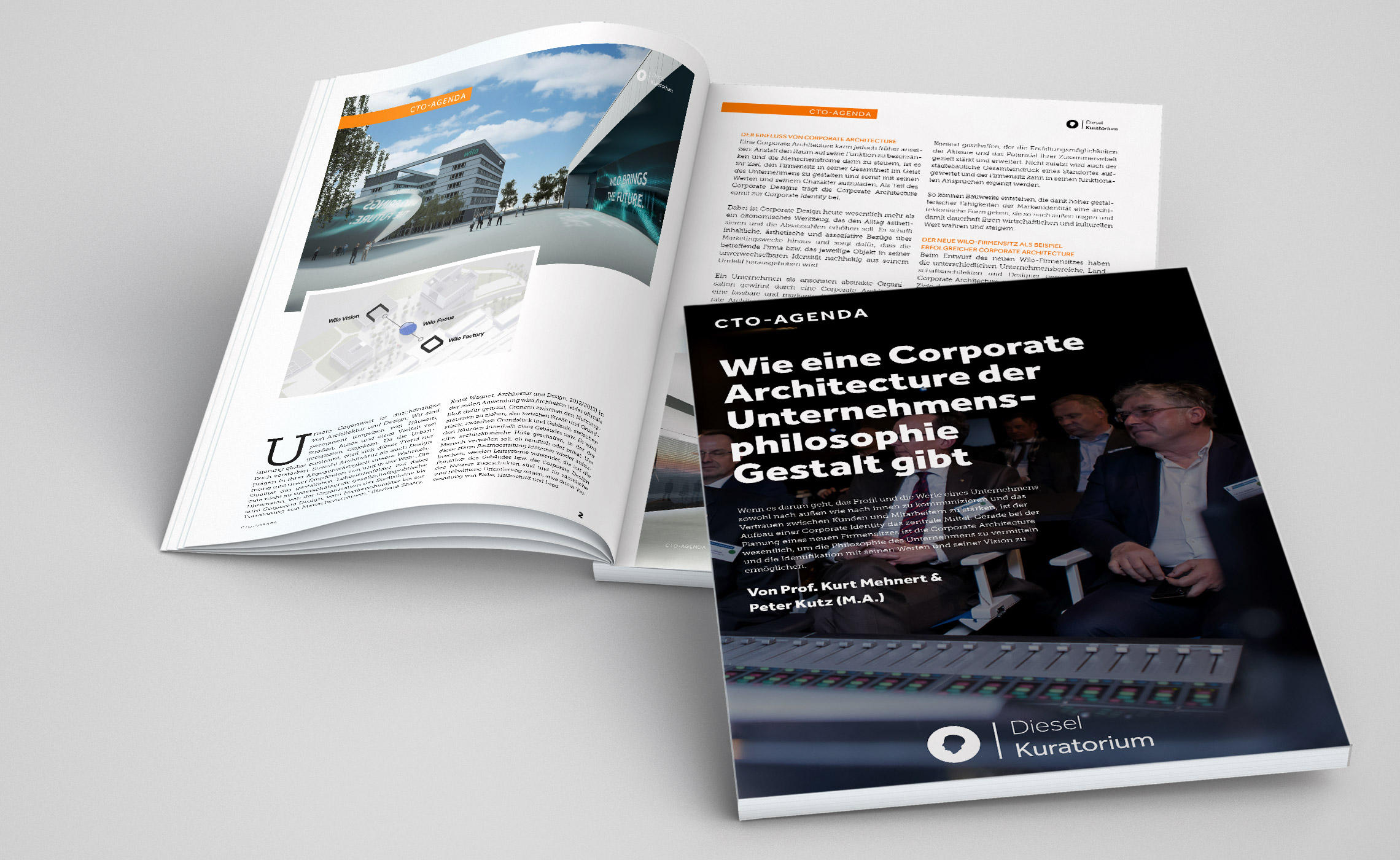
Corporate Architecture, Article in Innovation Management Magazine 1/2019
Deutsches Institut für Erfindungswesen (DIE) e. V., München
Wilo SE, Dortmund
How a corporate architecture gives shape to the corporate philosophy
Written by Prof. Kurt Mehnert, Peter Kutz (M.A.)
When it comes to communicating a company's profile and values both externally and internally and strengthening trust between customers and employees, building a corporate identity is the central means.
Especially when planning a new company headquarters, corporate architecture is essential to convey the company's philosophy and to enable identification with its values and vision.
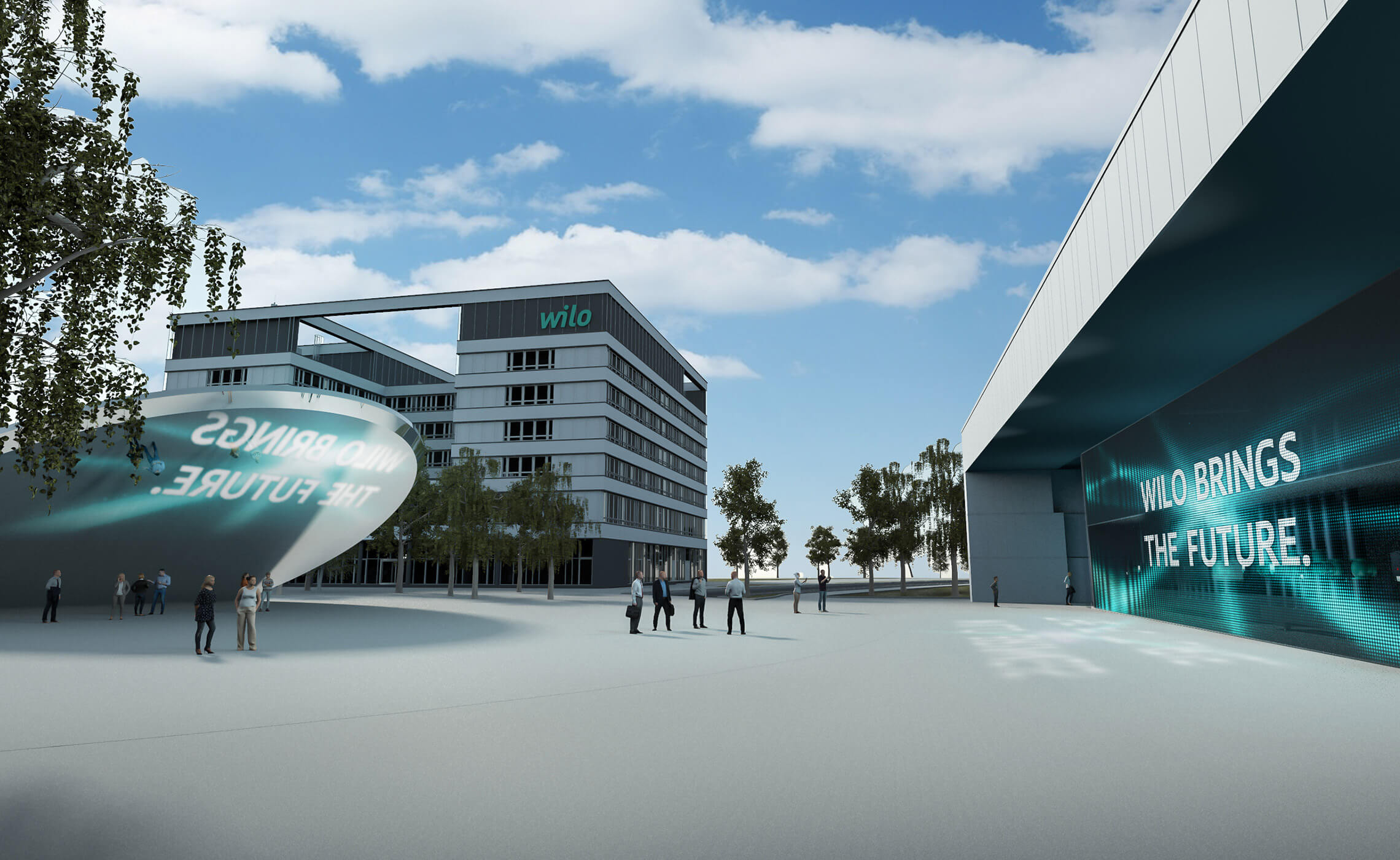
Background
Our present is permeated by architecture and design: we are permanently surrounded by houses, streets, cars and a variety of designed objects. As global urbanization increases, this trend will only intensify. Both architecture and design shape our perception and perception of and in the world in their omnipresence: "The quality of the designed living environment has a socio-political dimension that should not be underestimated, from the organisation of urban spaces to corporate design, from brand character to the formation of streams of people". (Barbara Shatry, Ernst Wagner, Architecture and Design, 2012/2013)
In real applications, architecture is unfortunately often only used to draw boundaries between the spaces of use, i.e. between street and plot, between plot and building, between spaces within a building, etc. An architectural shell is created in which man should dwell, whether professionally or privately. In order to break up this rigid spatial design afterwards, guidance systems are used that are tailored to the function of the building or the corporate design of the user and provide spatial and content-related orientation, for example by using colour, house lettering and logo.
The Influence of Corporate Architecture
However, a corporate architecture can start earlier: Instead of restricting space to its function and controlling the flow of people within it, its aim is to design the company headquarters as a whole in the spirit of the company and thus charge it with its values and character. As part of the corporate design, the corporate architecture thus contributes to the corporate identity.
Today, corporate design is much more than just an economic tool designed to aestheticize everyday life and increase sales. It creates content-related, aesthetic and associative references beyond marketing purposes and ensures that the company or object in question is sustainably lifted out of its environment in its unmistakable identity.
A company as an otherwise abstract organisation gains a tangible and striking shape through a corporate architecture: By embodying a company's self-image, Corporate Architecture also creates an important pillar of trust and identification for its customers, its employees and its brand as a whole. This creates an atmosphere and a context that specifically strengthens and expands the development opportunities of the actors and the potential of their collaboration. Last but not least, the overall urban impression of a location is enhanced and the functional requirements of the company headquarters can be enhanced.
In this way, buildings can be created which, thanks to high design skills, give the brand identity an architectural form, thus bringing it to the outside world and permanently preserving and increasing its economic and cultural value.
The new Wilo headquarters as an example of successful corporate architecture
As a long-standing partner, Mehnert Corporate Design was in charge of designing the entire communication concept for the new Wilo headquarters and was supported by the renowned WKM landscape architects and in the technical implementation of the digital worlds by tennagels Medientechnik.
The aim was not only to communicate the values of Wilo SE to the outside world and make them transparent, but also to integrate them internally into the corporate culture. It is based on the mega-trends, which define a clear strategy and serve as a guidepost for the long-term development of Wilos. These include energy and water scarcity, globalization, climate change, digital transformation and urbanization.
In addition to the focus on resource-conserving technologies, the digital transformation will be particularly present in the new company headquarters, for example by integrating its advantages into the Smart Factory. Employees will benefit from this in particular and will be enabled to participate in the development of Wilos through the latest technologies and a large number of digital interfaces. This creates a "we-feeling" that motivates the employees to participate in the design process with passion and to make them aware of their affiliation to Wilos in the future.
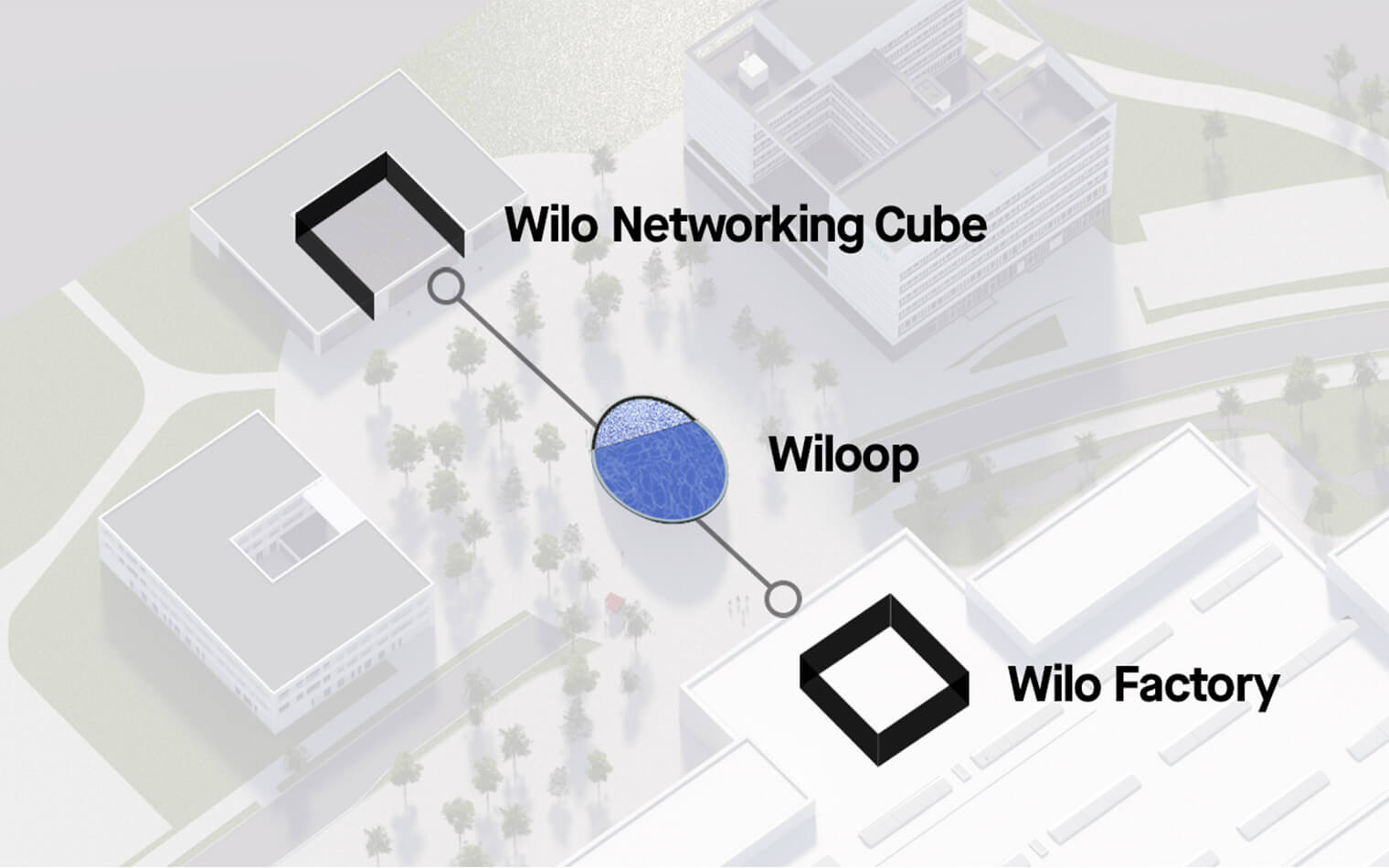
When planning the company headquarters, care was taken to create an organic whole that integrates all areas of the company. Central to this is an axis that combines the contents of several buildings and their functions: At the ends of this axis are the Wilo Networking Cube, where visitors are welcomed and presentations held, and the Wilo Factory, with its digital offerings tailored to the employees. In the centre, the fountain sculpture Wiloop attracts attention and serves as a symbol and point of orientation for all parts of the Wilo family. It is flanked laterally by the Wilo Pioneer Cube and Wilo Solution Cube buildings.
A presentation of the megatrends and solutions of Wilo SE awaits the visitor, who will be received at Wilo Networking Cube; then the path leads via Wiloop to Wilo Factory, where the digital transformation can be experienced using real examples.
The Wilo Networking Cube serves as a kind of bracket that not only summarises the content and form of the Wilo Factory opposite, but also the buildings in between, and concentrates and concisely illustrates the essence of Wilo SE.
The Wilo Networking Cube
At the centre of Wilo Vision, visitors can expect a digital curtain that can be freely played on and thus individually adapted to the content of each visitor group. Its size not only allows for a large number of sophisticated presentations, but also establishes digitalisation as part of Wilo's brand core right from the start.
In addition to the presentations, the reception area also offers space for temporary exhibitions, which can be supported and expanded by the surrounding digital curtain. On the ground floor, outside of the reception area, both permanent and temporary exhibitions can be shown, which explain Wilos products and services to visitors outside of the trade fair period with exhibition objects, among other things.
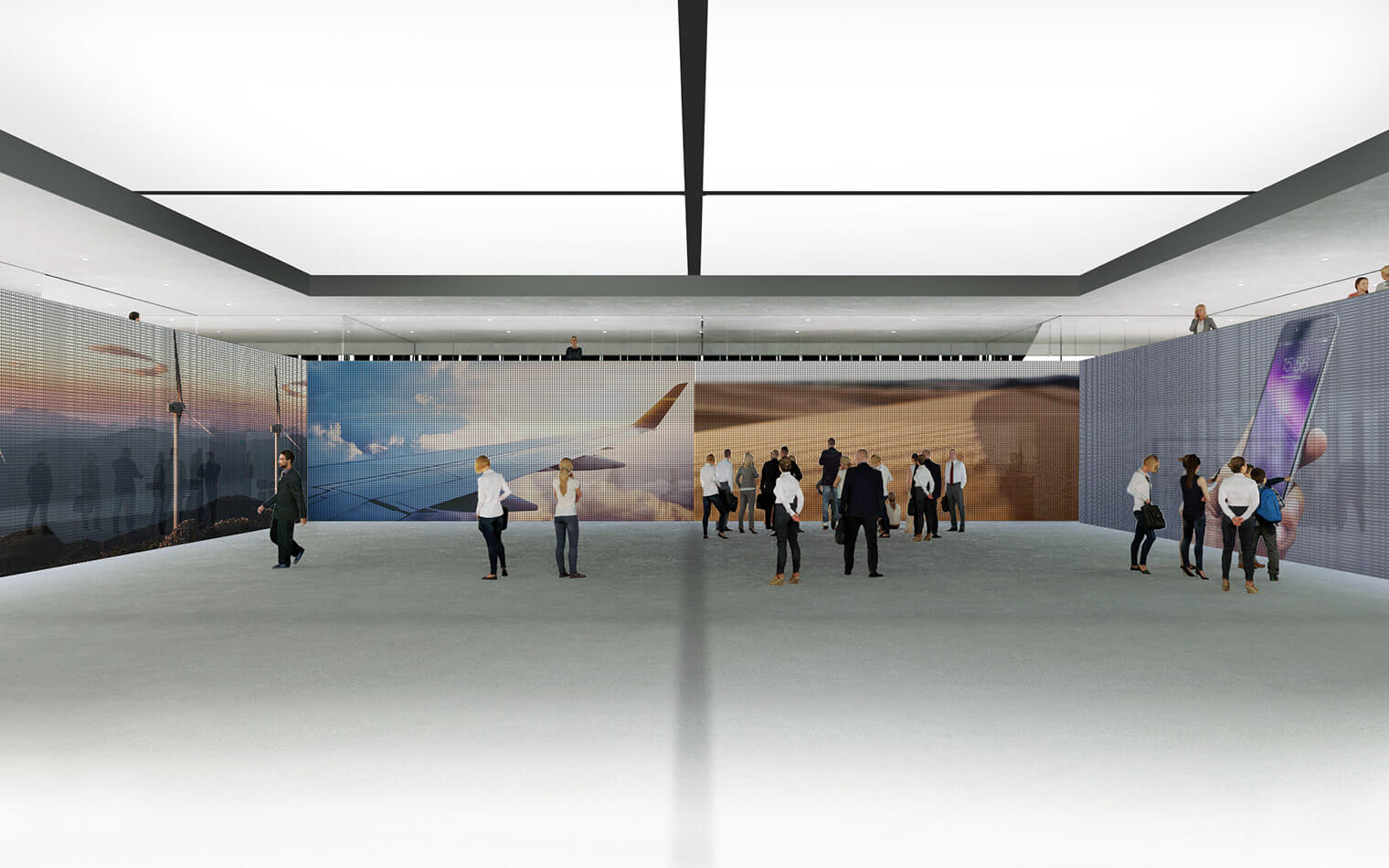
Behind the digital curtain, the path leads up a staircase to the first floor, where the meeting rooms are located and can be entered via the surrounding gallery. The special feature is that the digital curtain extends up to the parapet height of the second floor so that visitors have a clear view of the reception area from the gallery.
The flexible and open room concept also applies to the meeting rooms with their movable walls, so that the room size can be adapted to different visitor groups and is available for various occasions such as training courses and smaller presentations.
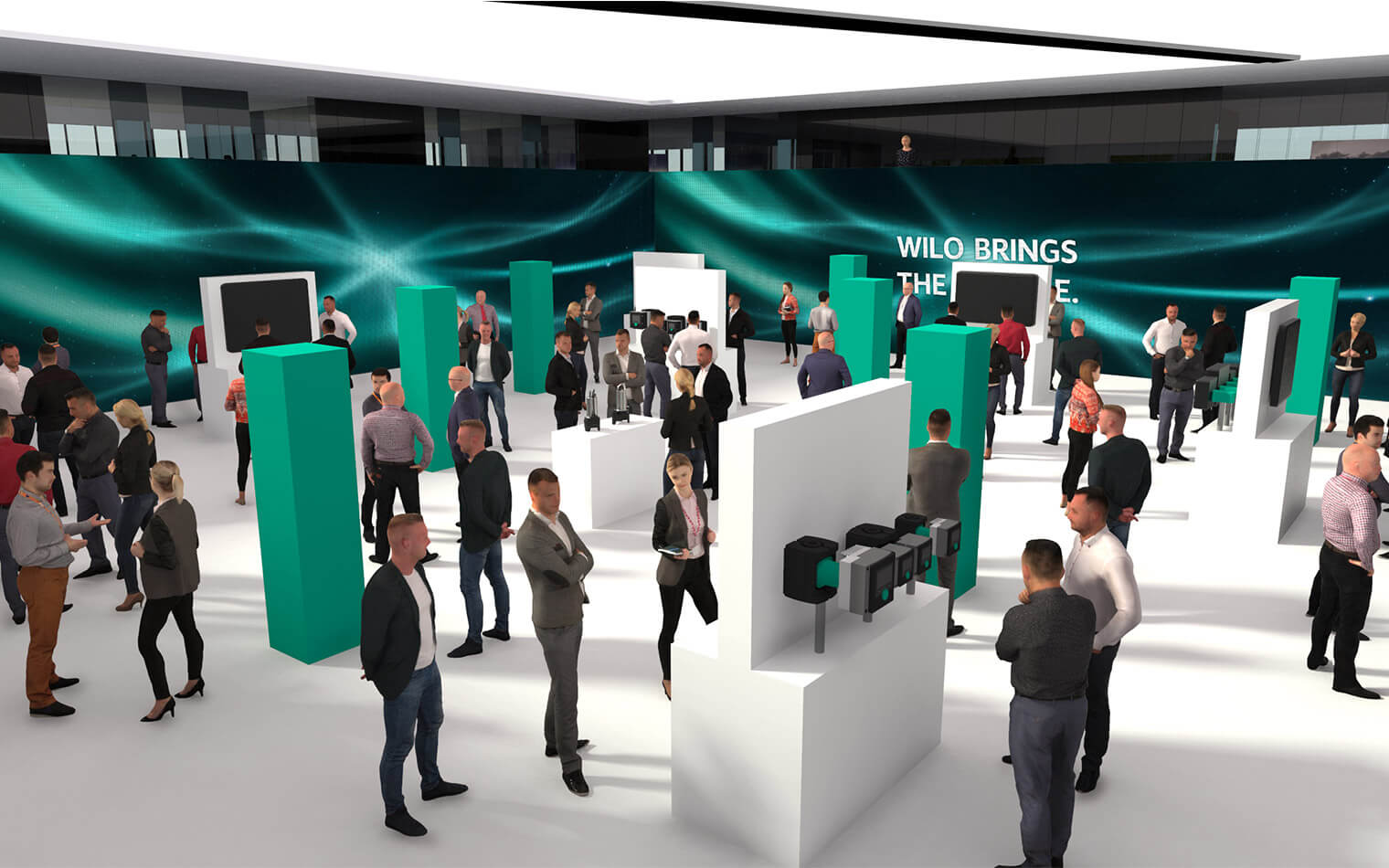
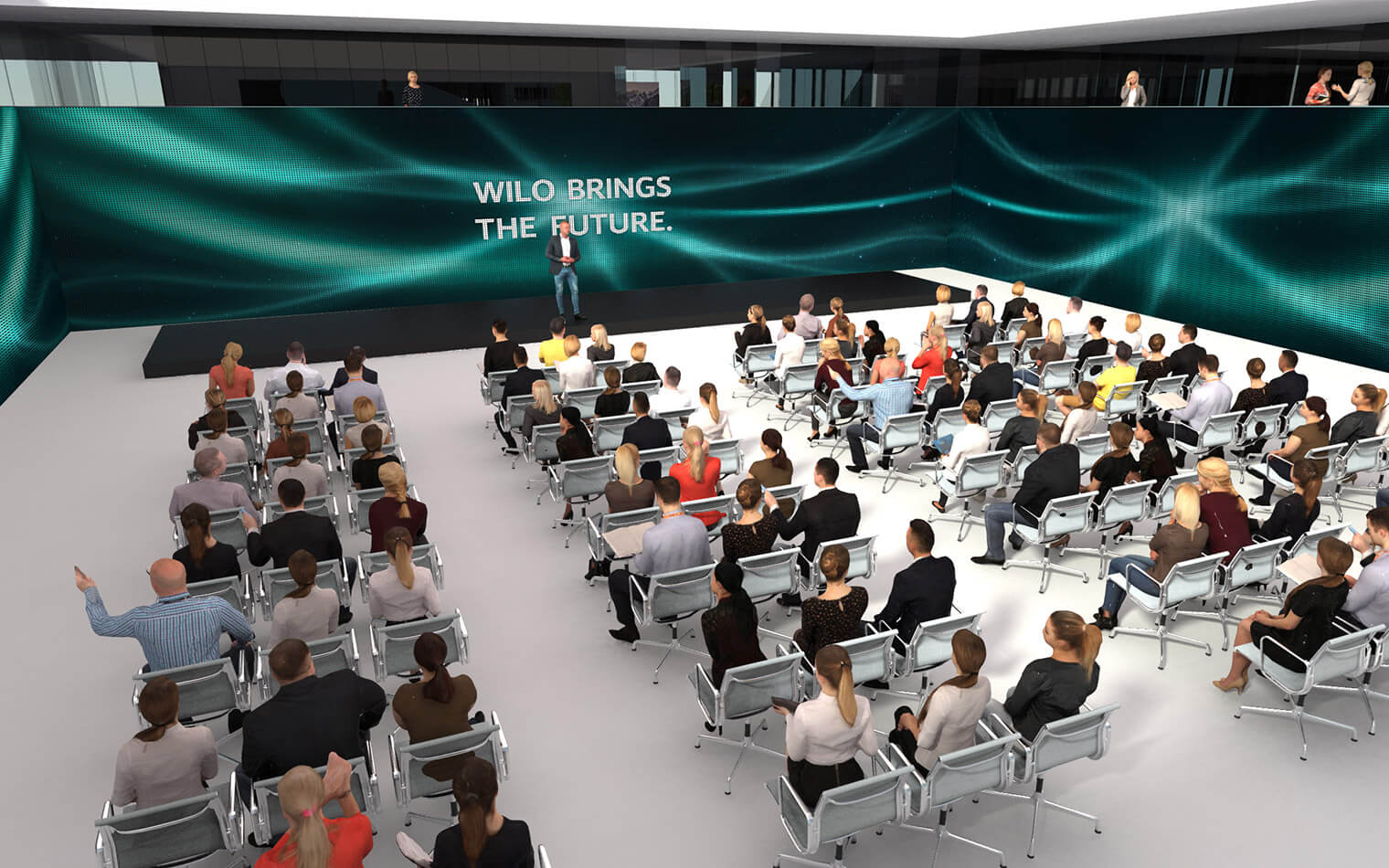
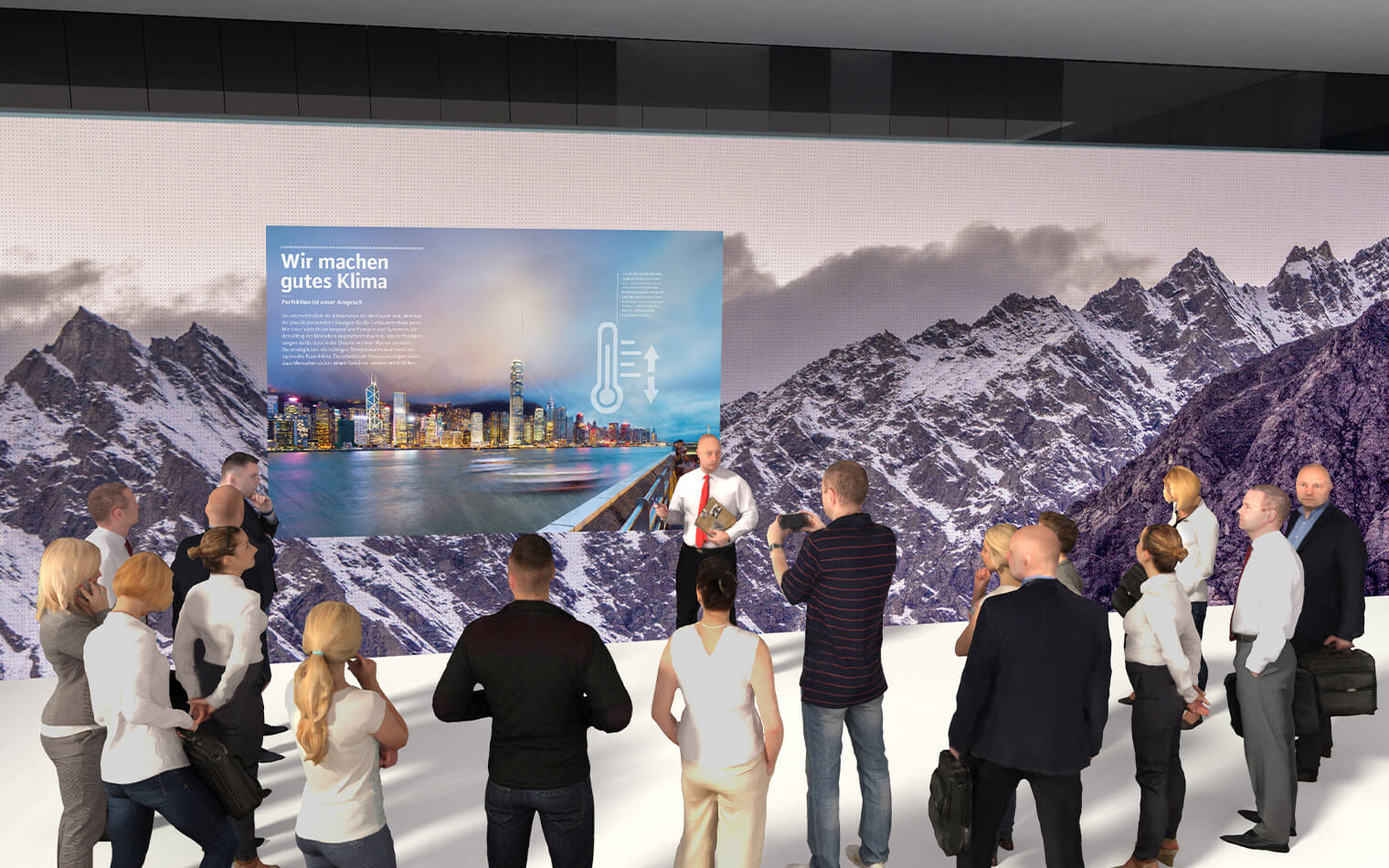
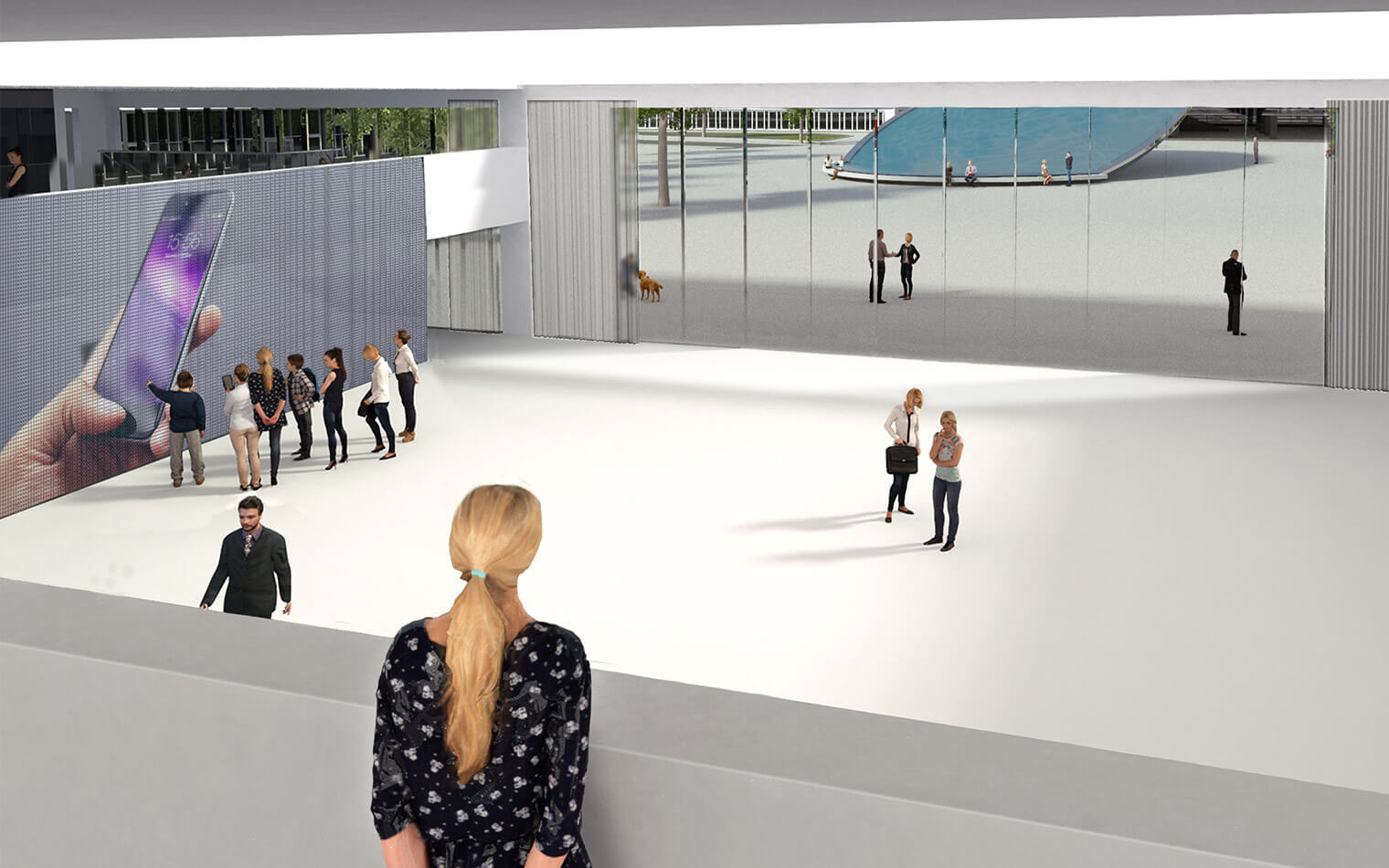
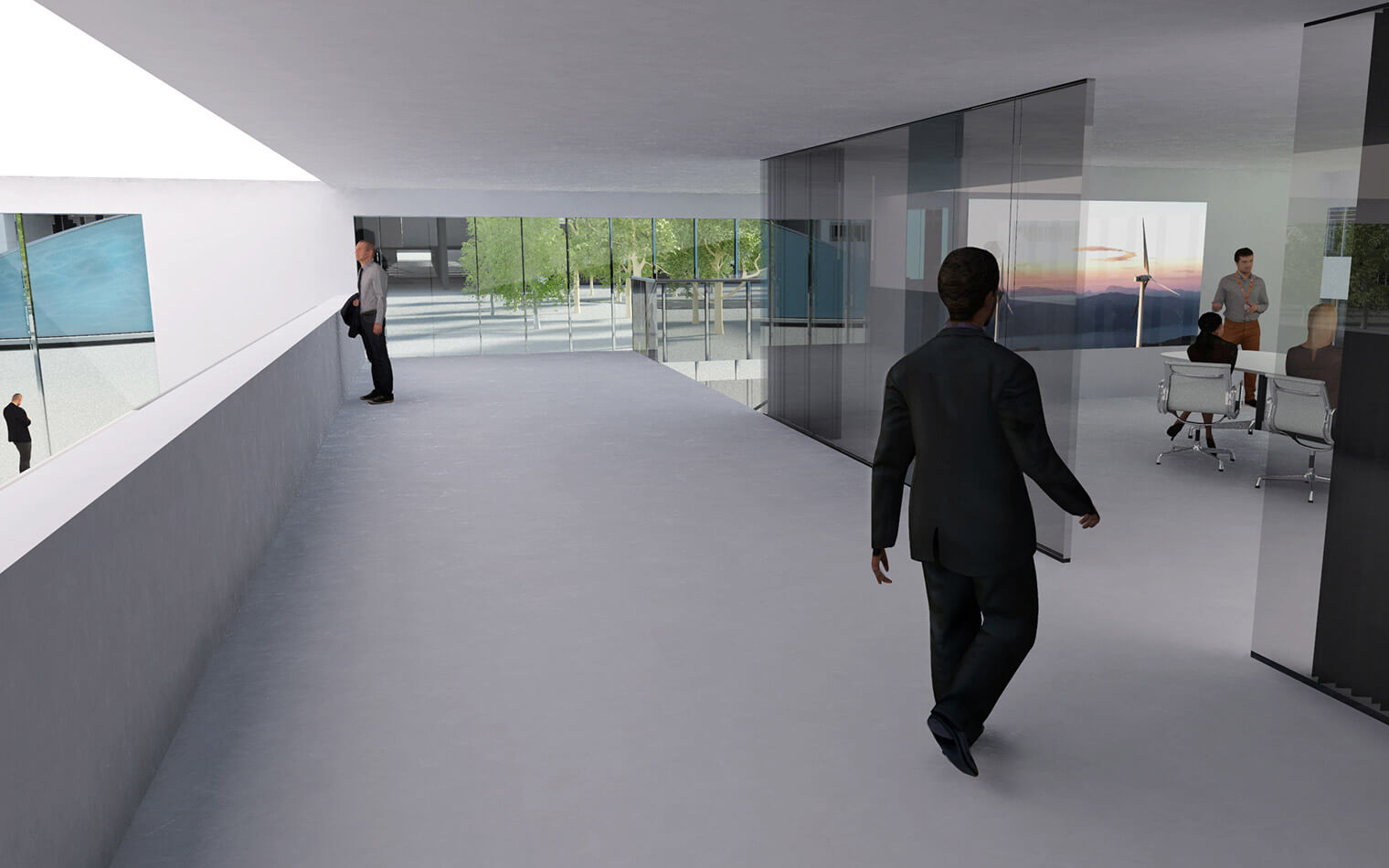
The Wiloop
The Wiloop guides the visitor's path from Wilo Networking Cube to the centre of the company headquarters - as a sculptural, large-scale fountain on which the water runs down over the entire surface, it functions between the numerous free-standing trees as a kind of clearing and meeting point for employees, visitors and customers. The stay at the impressive sculpture becomes even more attractive as the trees, with their trunk height of around four metres, offer shade in summer and provide a variety of colours between the seasons through the planting of different tree species.
With chairs and tables that can be freely arranged, the space around the Wiloop invites you to linger, be it to create a communication space for groups of any size or a retreat for individual persons.
The sculpture Wiloop with its characteristic bend serves as a constant inspiration. This sculpturally minimalist element fulfils a multitude of functions:
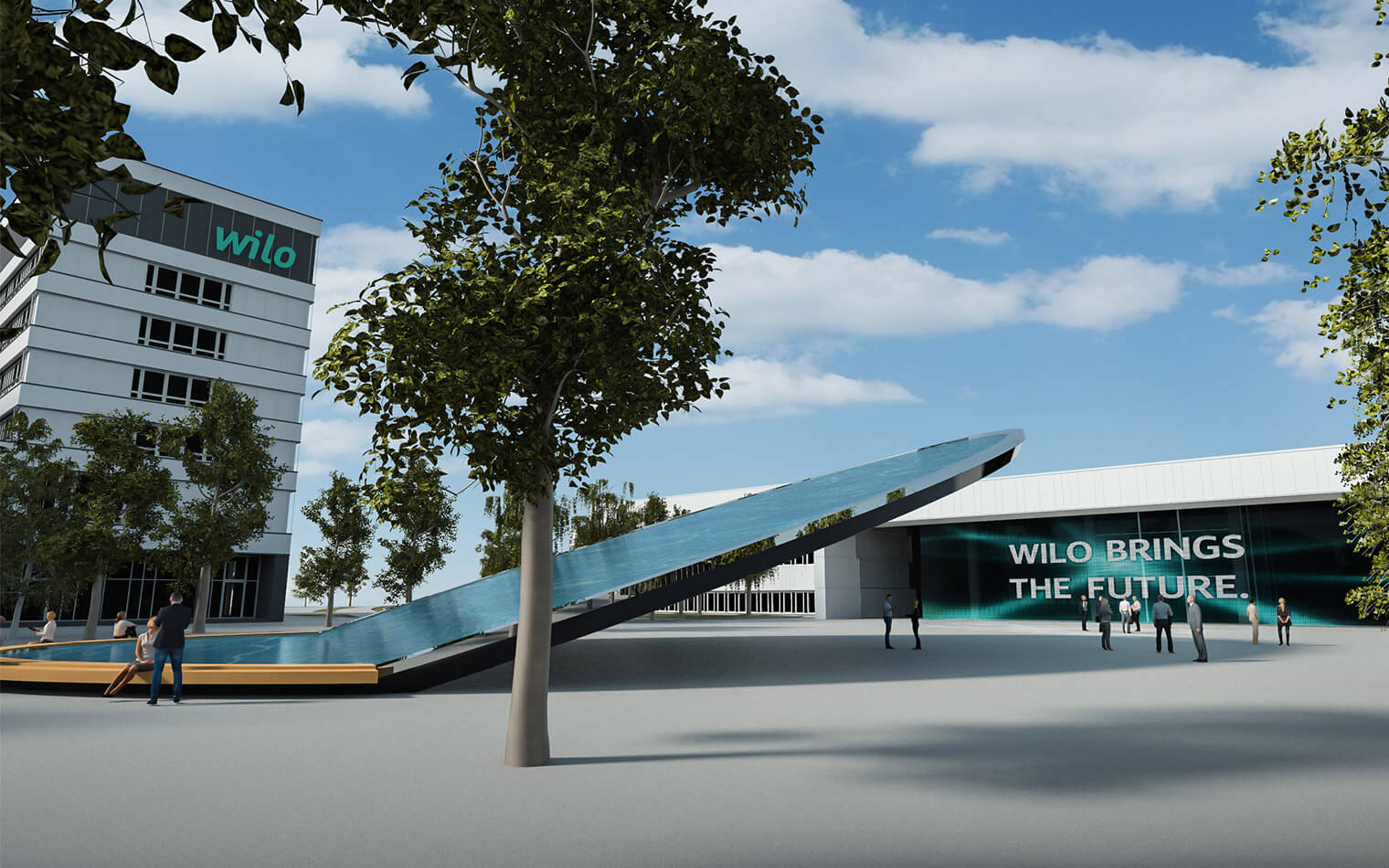
First, two different spaces are created, divided by the increasing area. On the upper side or around the well, the water flowing down creates a naturally relaxed atmosphere that enhances the experience for visitors and employees, and at the same time symbolizes one of Wilo's core competencies, water supply. In addition, the bend in the surrounding buildings provides a direct view of the water, which would otherwise only have been possible on site.
Secondly, below the rising surface on the street side, a further, multi-purpose space is created, for example by offering protection from rain and sun and providing an inviting opportunity for special events and flying catering. The spatial experience is further enhanced by the full reflection of the underside: this provides additional brightness, the optical enlargement of the room and a greater lightness through the reflection of the surroundings. Thirdly, the rise of the water surface on a symbolic level conveys the up-and-coming development and progressive spirit of Wilo.
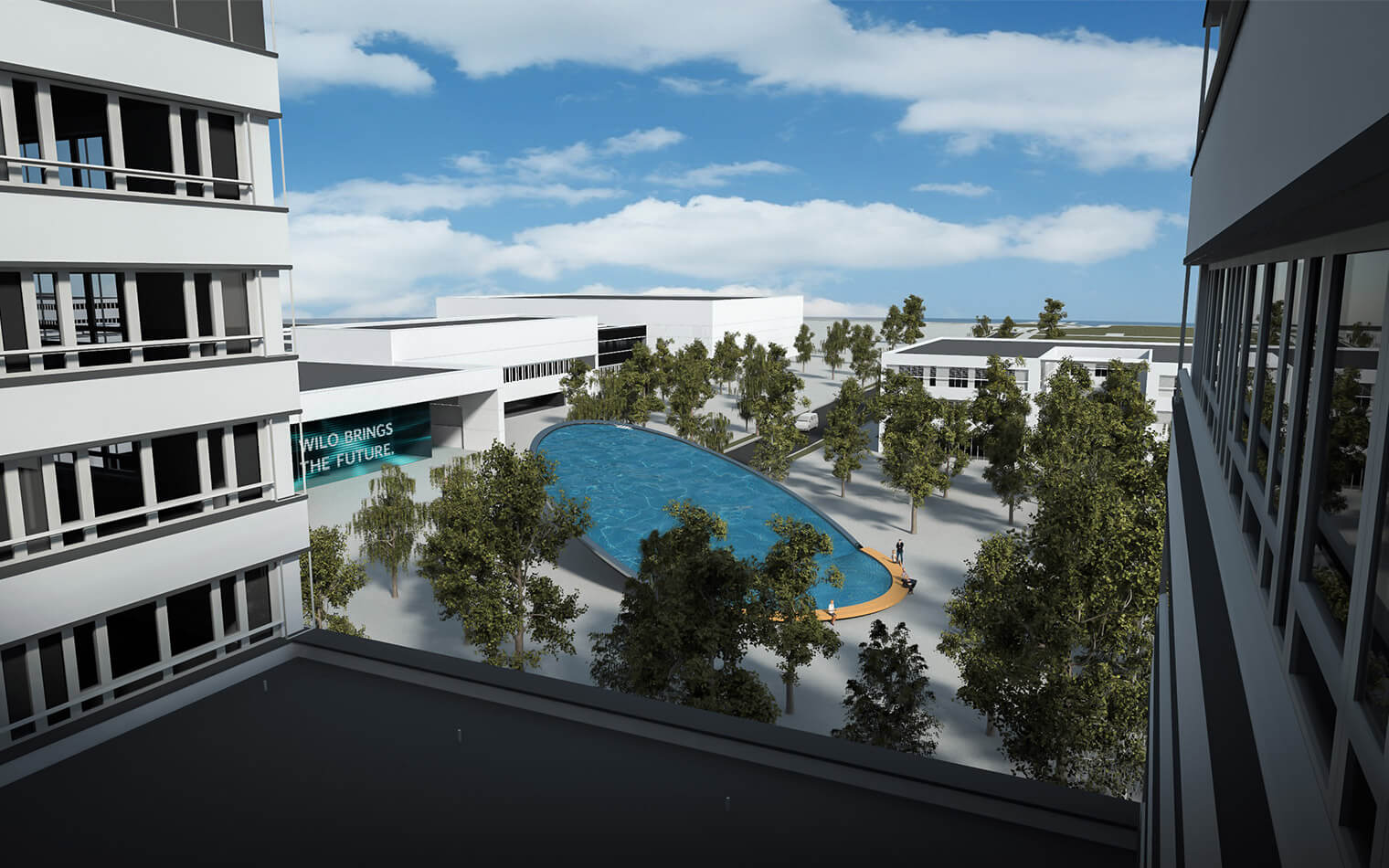
The Wilo Factory
The visitor is guided into the Wilo Factory via the central Wiloop. An LED screen on the outside of the building already receives the visitor. This offers the opportunity to present the latest developments in advance and to carry general information to the outside world in order to bring employees and visitors up to date as they pass by.

In the Wilo Factory, visitors can find out more about Wilos solutions with regard to megatrends and about the advantages of the Smart Factory directly on site. In addition, a further LED screen inside the Smart Factory ensures that employees are reliably and easily supplied with the latest internal information.
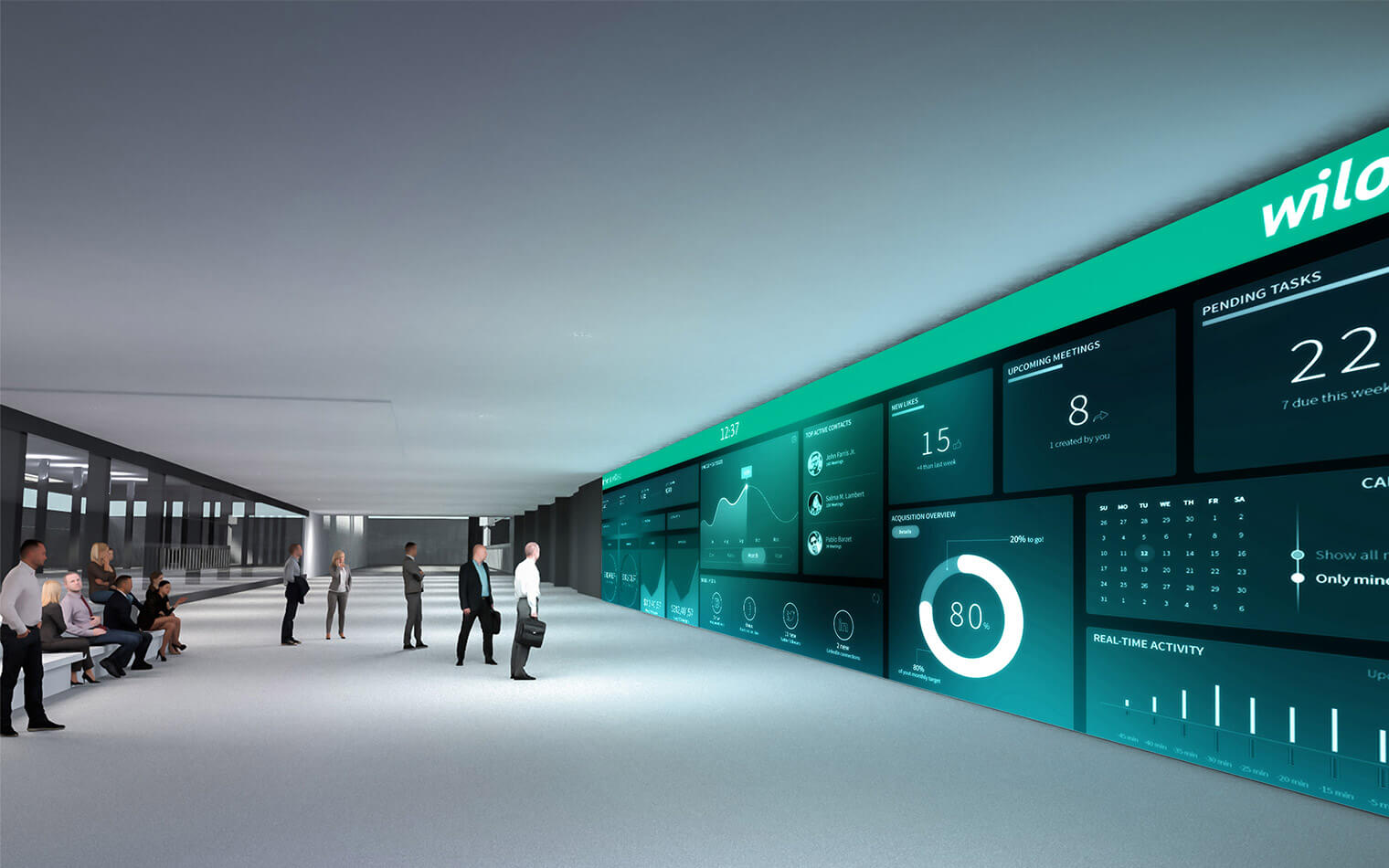
Bottom line
With the new building of its company headquarters, Wilo succeeds in repositioning itself in a sovereign and sustainable manner by making targeted use of the advantages of corporate architecture. This enables Wilo SE not only to communicate its values, goals and visions, but also to implement them on site and set an example in its corporate culture on a daily basis. This creates lasting trust and helps to bind both customers and employees to the company in the long term.



